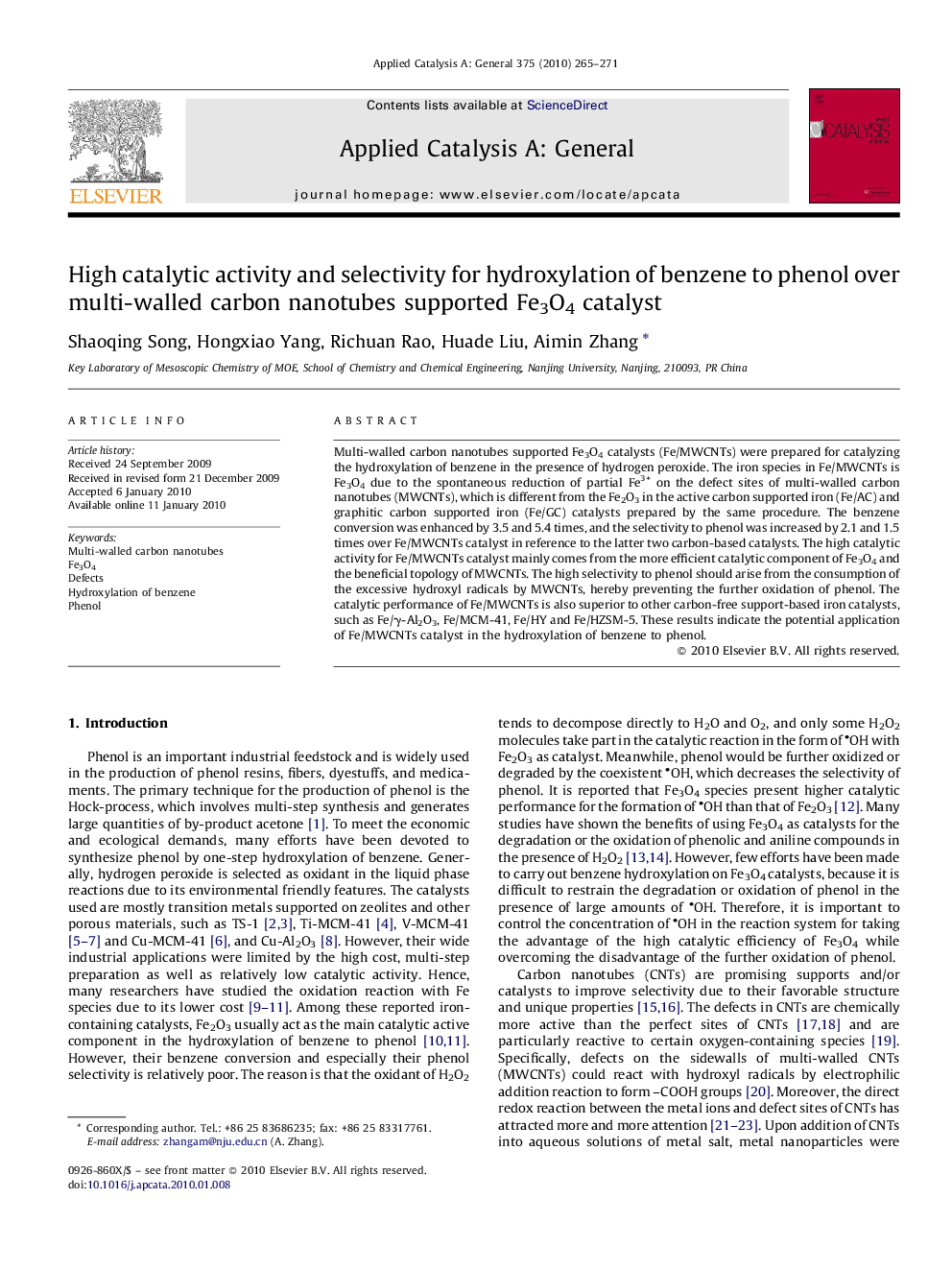| Article ID | Journal | Published Year | Pages | File Type |
|---|---|---|---|---|
| 42481 | Applied Catalysis A: General | 2010 | 7 Pages |
Multi-walled carbon nanotubes supported Fe3O4 catalysts (Fe/MWCNTs) were prepared for catalyzing the hydroxylation of benzene in the presence of hydrogen peroxide. The iron species in Fe/MWCNTs is Fe3O4 due to the spontaneous reduction of partial Fe3+ on the defect sites of multi-walled carbon nanotubes (MWCNTs), which is different from the Fe2O3 in the active carbon supported iron (Fe/AC) and graphitic carbon supported iron (Fe/GC) catalysts prepared by the same procedure. The benzene conversion was enhanced by 3.5 and 5.4 times, and the selectivity to phenol was increased by 2.1 and 1.5 times over Fe/MWCNTs catalyst in reference to the latter two carbon-based catalysts. The high catalytic activity for Fe/MWCNTs catalyst mainly comes from the more efficient catalytic component of Fe3O4 and the beneficial topology of MWCNTs. The high selectivity to phenol should arise from the consumption of the excessive hydroxyl radicals by MWCNTs, hereby preventing the further oxidation of phenol. The catalytic performance of Fe/MWCNTs is also superior to other carbon-free support-based iron catalysts, such as Fe/γ-Al2O3, Fe/MCM-41, Fe/HY and Fe/HZSM-5. These results indicate the potential application of Fe/MWCNTs catalyst in the hydroxylation of benzene to phenol.
Graphical abstractMulti-walled carbon nanotubes (MWCNTs), active carbon, graphite carbon, γ-Al2O3 and other porous materials supported iron were prepared for catalyzing the hydroxylation of benzene to phenol in the presence of H2O2. Fe/MWCNTs presents the highest conversion of benzene as well as the best selectivity to phenol, which should come from the formation of highly efficient catalytic components of Fe3O4 and the consumption of excessive OH by MWCNTs.Figure optionsDownload full-size imageDownload high-quality image (118 K)Download as PowerPoint slide
